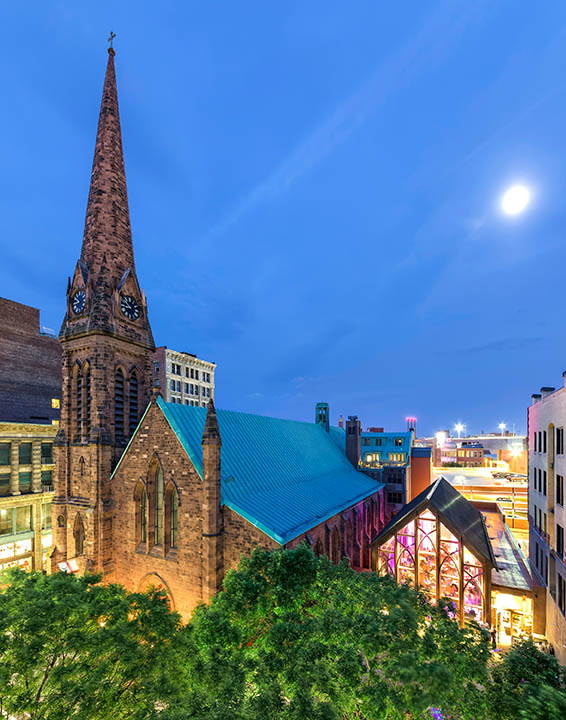Grace Episcopal Church has occupied a prominent spot on Westminster Street in Providence, Rhode Island, since the early 1830s, when a congregation was founded in the city’s developing west end, across the Providence River from the city’s oldest precincts.
The congregation bought an old theater on the site and occupied it until 1846, when a new sanctuary by the celebrated church architect Richard Upjohn was completed. As beautiful as Upjohn’s building is, it has the drawbacks of many old churches: thick walls, heavy doors, windows you can’t see through—architecture that frustrates the creation of community with the surrounding neighborhood. A few years ago a parking lot just west of the church became available, and the congregation decided to create a new landmark on Westminster Street as a way to reach out to Providence: the “Pavilion at Grace,” as it’s known, designed by Centerbrook Architects.
“We view the new building as an extension of our ministry,” explains Rev. Jonathan Huyck, Rector of Grace Episcopal. The narrow but deep site offered an opportunity to recess the new multipurpose building from the edge of Westminster Street (which the church fronts), creating a welcoming courtyard next to the Upjohn church and in front of the Pavilion. “It is one of the few new public spaces in downtown Providence,” notes Huyck, adding that the Pavilion itself is one of the first new buildings on the street in decades.
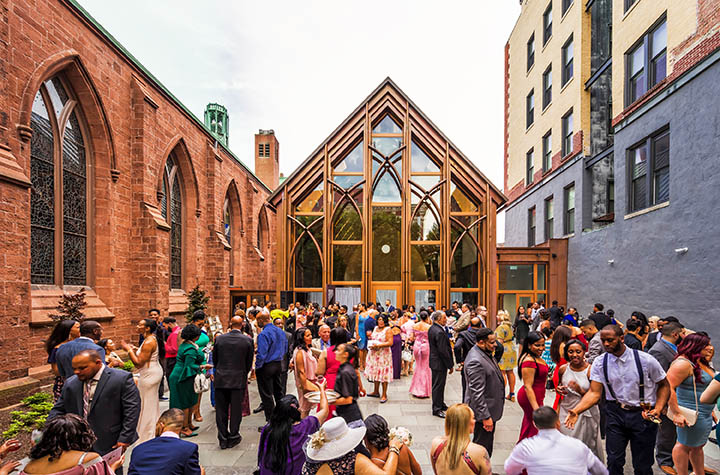
The intent was to create welcoming interior and exterior spaces not only to serve the church, but the community as well. “Its use by the community has been robust,” says Christopher Barker, Director of Administration at Grace. As expected, the soaring, vaulted interior of the Pavilion—beautifully illuminated with soft light and wonderful views out to Westminster Street–has become a popular spot for wedding receptions. But it’s not just for parties. Barker ticks off a list of national and local non-profit organizations, community groups, and civic organizations that have gathered at the Pavilion to further their own “missions, many of which align with our own.” He adds that the Pavilion and its gracious courtyard have become a way to “allow us to help organizations and events we want to help–charter schools, fund raisers, concerts for seniors.”
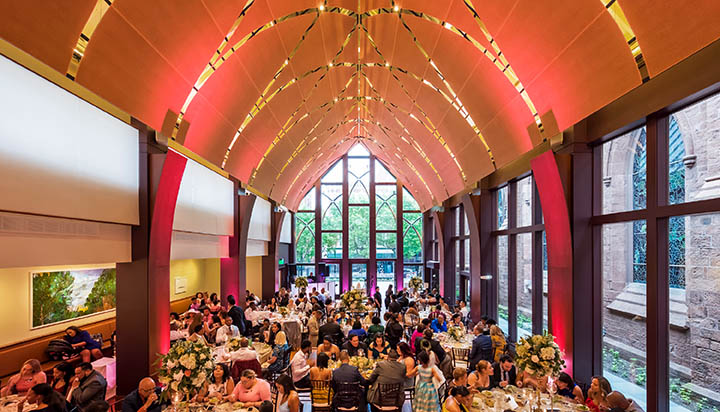
Interior of the Pavilion can accommodate approximately 175 seated and 250 standing guests. Photo: Jeff Goldberg/Esto
Part of the attraction of the Pavilion’s indoor and outdoor spaces is its architecture. Designing a new building next to a noted work such as Upjohn’s might intimidate any architect. James Childress, a Principal at Centerbrook, notes that the congregation wanted something inviting and transparent that echoed its neo-Gothic “grandparent” next door. The solution is what might be described as a re-invention of Gothic architecture, fashioned from copper instead of stone. The material’s color resonates with the older building’s brownstone, and its lacy details permit a glassy envelope, revealing the warm interior to the courtyard and Westminster Street beyond. It’s a glass box that belongs to its time and place. Inside, the vaulted ceiling of perforated metal panels recalls the vaults of Upjohn’s church, but with a twist: the “ribs” between the vaults are missing to reveal downlights that wash the interior space. The small round perforations in the sheet metal dampen sound reverberation in the space, making it ideal for musical performances.
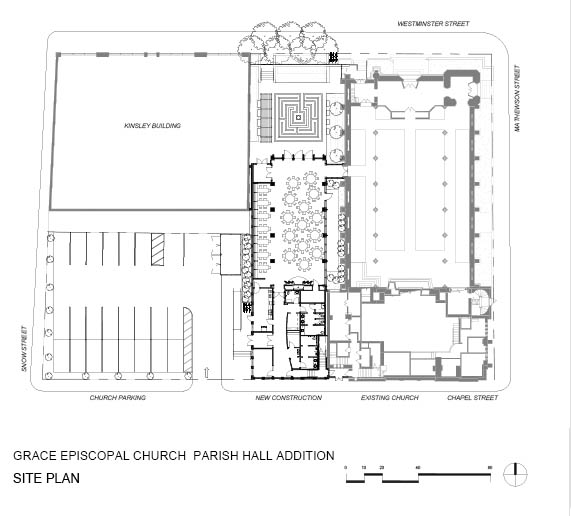
The Pavilion opens out onto the courtyard that is raised above the street by about four or five feet, giving it a prospect on the thoroughfare and subtly insulating it from the bustle of cars and pedestrians. Light and dark granite paving in the courtyard is laid out in a labyrinth pattern—a popular feature that many have walked. The courtyard is open to anyone during the day (just as the church is) and Huyck and Barker report that it is a popular spot for people to sit and read or relax with a cup of coffee. A kids’ reading group from a local library are regular visitors.
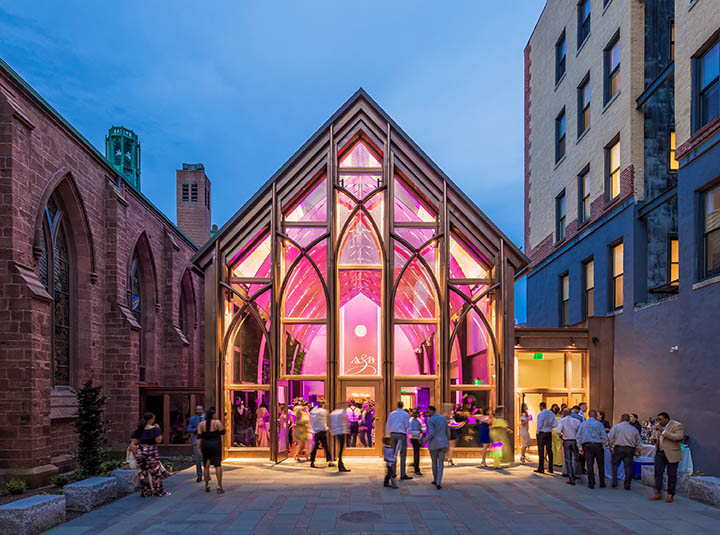
Neo-Gothic details distinguish the transparent glassy enclosure. Photo: Jeff Goldberg/Esto
A metal fence and gate with Gothic details extends across the courtyard as it faces the street. It was added after the Pavilion was completed as a deterrent to unwelcome visitors after hours, and its presence is an unfortunate necessity in this urban context. Congregations everywhere struggle with the balance between welcoming, openness and vigilance.
The American theologian Harvey Cox has observed that in a religiously diverse world, where fear of “the other” is common, it’s essential for houses of worship—especially in cities–to create space for those both “inside” and “outside” the faith community as a setting to get to know the other. As Cox told me in an interview, reflecting on this contemporary need, “we can share spaces without losing much, in fact we might even gain something from it.”
The Pavilion and its courtyard are proven assets for this neighborhood and the city of Providence, as well as for Grace Church.

